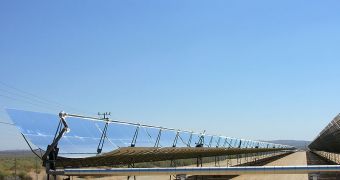Bergamo Acquisition Corporation, a US-based energy company has signed a partnership with an Indian company to set up 1,000 MW of solar thermal power across India.
The company will own 60% of the project and it has already chosen six sites, one in each state, for setting the six 100 MW power plants, whose capacity is scheduled to rise up to 1,000 MW.
The first power plant will be built in Solan, Himachal Pradesh, and the US company will also have to invest nearly $220 million, too implement a consumer-cum-retail division that will make high quality solar heaters and lamps (which will be manufactured locally by 2001).
This growing interest in Indian solar energy comes as a consequence of the Indian government's plan to set up 20,000 MW of solar capacity by 2022, and under the National Solar Mission, the Indian central and state governments will give financial bonuses to those who will invest in solar power.
The National Solar Mission establishes that 1,300 MW need to be installed by 2013, 10,000 by 2017and 20,000 by 2022, and the project for the first phase have already been approved.
Debashish Majumdar, chairman and managing director of Indian Renewable Energy Development Agency the projects surpassed the target for the first phase.
“We are over-subscribed for the first phase of 1,300 MW, and by December 2011 generation will have begun work for at least half of this target.
“The rest could be done by December 2012 which will be ahead of schedule.
“There is no dearth of investors.”
There are other foreign companies that want to expand their presence on the Indian solar market, like Siemens, Blackstone or Astonfield Renewable Resources.
The offer of the Indian government is very attractive as besides tax facilities and a guaranteed return on investments, it has also set tariff rates for solar PV and thermal power plants, much higher than what they give to coal power plants.
There is also a very high demand for solar energy-based power because all the states must buy a certain percentage of their power from renewable energy power plants.
As for the high cost of solar energy, the power companies will combine the energy they sell to customers (taking part of it from conventional power plants and part from renewable energy power plants), so that they remain unaffected by the costs.
The deal is that the government will compensate the power companies through several financial incentives, CleanTechnica reports.

 14 DAY TRIAL //
14 DAY TRIAL //